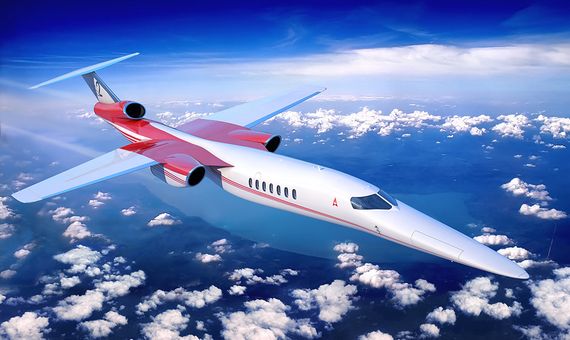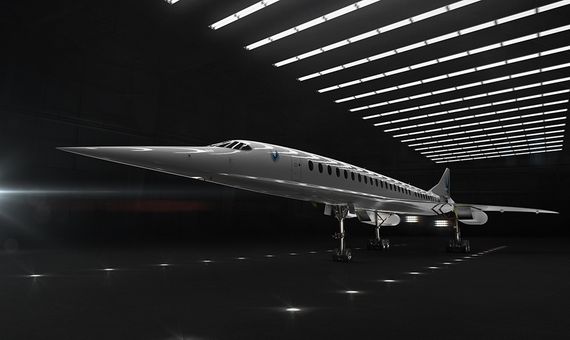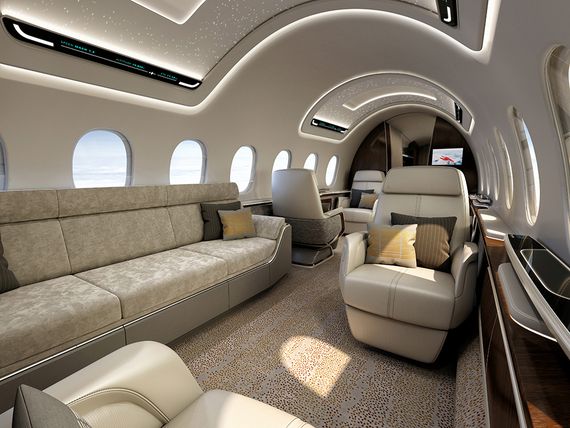When the television series “The Jetsons” (“Los Supersonicos” in the Spanish-speaking world) premiered in 1962, the world was dreaming about much faster and more stylized planes that would cross the planet in a few hours. The great powers already dominated supersonic flight and the word itself was by then a symbol of a hyper-technological future, like that depicted in the cartoon series. (In 1967, the name “SuperSonics” was chosen by the owners of the newly-awarded National Basketball Association franchise for Seattle, USA.) But the reality is that nowadays most commercial aircraft are somewhat slower than those of half a century ago, and the big news is much larger and heavier aircraft. In 2018, however, NASA and two startups have detailed their plans to resuscitate supersonic aircraft in less than five years.
The dream of that supersonic future died on 24 October 2003, when the Concorde made its last flight. Travelling from New York to London, it crossed the Atlantic Ocean in just 3 hours and 30 minutes with 100 passengers, most of them celebrities and aviation figures. It was the $9,000 ticket price that made supersonic flight a luxury—30 times more expensive than a tourist class flight, which used to take twice as long, clocking in at about 7 hours.
However, the iconic design of the Concorde, with its delta wing shape, turned it into a necessarily narrow aircraft (less than 3 metres) in which it was impossible to give so many passengers the comfort offered by the business class of modern commercial aircraft, such as the Boeing 787 Dreamliner.
More luxurious, but slower
The first way to resurrect supersonic flights is with private jets. Their proponents are trying to appeal to the same market niche as the former customers of the Concorde, those willing to pay high prices in order to save some hours of flying time across the Atlantic, but now they promise an authentic luxury experience. This is the idea of the startup Aerion, which on 15 October unveiled a new supersonic engine for civil aviation (the first since the 1960s), developed in collaboration with the giant General Electric. Three of those engines will propel Aerion’s supersonic jet AS2, whose plan is to carry out the inaugural flight in 2023, coinciding with the 20th anniversary of the last flight of the Concorde.

If these plans come to fruition, the AS2 will be 60% faster than current commercial aircraft and will travel from New York to London in just 4.5 hours (one more than the Concorde), carrying a maximum of 12 passengers (compared to the 100 that travelled in the mythical airplane). Designed in collaboration with the aerospace company Lockheed Martin, it draws attention for its straight wings, more similar to those of a modern fighter and very different from the delta wings of the Concorde.
The objective of this innovation is to achieve more efficient and longer flights, reducing friction and drag—and therefore fuel consumption—by making the air flow laminar (and not turbulent, as in conventional wings with the arrow or delta shape). Thus, the AS2 will fly over the ocean at a maximum speed of Mach 1.4 (about 1,730 km/h, or 1.4 times the speed of sound), while on the ground it will perform subsonic flight of up to Mach 0.95 (about 1,170 km/h). Current civil aviation regulations do not allow the speed of sound (Mach 1) to be exceeded over land to avoid the annoyances and possible damage caused by sonic booms when breaking the sound barrier.
More affordable and faster
The other way to re-launch supersonic aircraft is with the strategy being pursued by the new company Boom, which aims to fly even faster than the Mach 2.04 maximum of the Concorde; reaching Mach 2.2 (2,717 km/h) would save more than half of the normal New York-London flight time, lowering it to only 3 hours and 15 minutes. In addition, this aeronautical startup is promising much lower operating costs, which would decrease the ticket price of supersonic flights to the level of current business class, and airplanes would carry up to 55 passengers with the same comforts as that class.

The formula for fulfilling all these promises is to maintain the design of the Concorde, but making it more refined. From the start, it will be smaller: 52 metres long (compared to 62 m in the retired aircraft). “There are really three big areas that have changed since the Concorde was designed: aerodynamics, materials and engines,” Boom CEO Blake Scholl told Wired magazine. With computer simulations it is much easier to optimize the design of an airplane than by conducting real tests in a wind tunnel. In addition, the new carbon fibre materials are much lighter and engines with afterburners are no longer needed to reach supersonic speeds.
Will it succeed? On the one hand, Scholl has the support of 5 major airlines, which have already reserved 76 aircraft. On the other hand, the prototype XB-1 to test Boom’s technological improvements has not yet made its test flight, which was initially planned for 2017 and the company has just announced that it will be carried out in 2019.
More quiet?
The rebooting of these supersonic dreams is accompanied by a strong dose of scepticism on the part of some analysts. “Supersonic is not what passengers or airlines want right now,” Strategic Aero consultancy has advised American Free Press, noting that the big demand is for cheaper flights. Independent consultant John Strickland also believes that: “it’s going to be some time before we see whether it can establish a large viable market … in the way that Concorde never managed to do.”

To this scepticism is added the criticism of the International Council on Clean Transportation, which after analysing the promises of the supersonic startups has calculated that: “new supersonic aircraft could burn 5 to 7 times more fuel than standard aircraft and exceed CO2 emission limits by 70%.”
The other great barrier to resuscitating supersonic flights is sound pollution. Boom does not provide any solution against sonic explosions, and Aerion promises a technology (patent pending) that manages to avoid them up to speeds of Mach 1.2. Even if they did, however, they would need a change in the regulations to be able to fly more than Mach 1 over land. Meanwhile, NASA is working with Lockheed Martin to test in 2021 prototypes of much quieter supersonic airplanes, whose design would prevent the shock waves from accumulating when breaking the sound barrier, and thus no explosion would be heard.
Comments on this publication